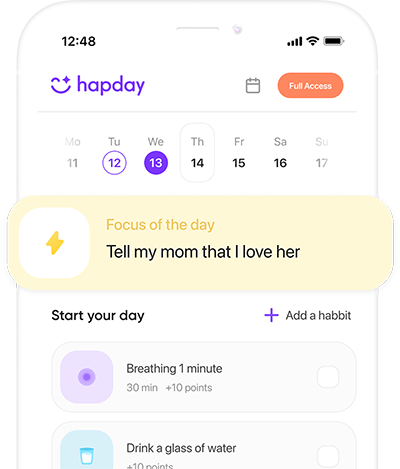Table of Contents
- Understanding Childhood Trauma
- The Impact of Trauma on the Brain
- The Science of Meditation
- Meditation and Neuroplasticity
- Reduction in Stress Hormones
- Types of Meditation for Trauma Healing
- Meditation’s Role in Emotional Regulation
- Meditation and the Autonomic Nervous System
- Meditation in Therapy Settings
- Personal Stories and Testimonials
- Overcoming Challenges in Meditation Practice
- The Future of Meditation in Trauma Recovery
- Bringing It All Together
Understanding Childhood Trauma
So, what are we talking about when we say “childhood trauma”? Basically, these are the nasty punches life throws at you in those early, fragile years. Think physical abuse, emotional neglect, or even losing a caregiver. According to the National Child Traumatic Stress Network, over two-thirds of kiddos report going through at least one traumatic event by age 16. And guess what? These experiences can mess with normal development. They often lead to anxiety, depression, PTSD—you name it.
The Impact of Trauma on the Brain
Ever wonder what trauma does to the brain? Neurologists have, and they discovered some unsettling stuff. Childhood trauma can tweak the very structure and function of little regions in the brain like the amygdala, hippocampus, and prefrontal cortex—areas linked to emotional regulation and memory. A particular study in the journal Biological Psychiatry showed that these changes can mess with emotional processing and behavior, making folks more prone to stress and mental health disorders.
The Science of Meditation
Now let’s pivot to how meditation plays into all of this. Essentially, meditation involves focusing attention and practicing mindfulness. It’s been shown to spark significant changes in both brain function and structure. Stress reduction, better emotional regulation, and overall improved mental health? Yep, all on the checklist. In the context of childhood trauma, the biggest win is the calm that meditation fosters—and the subtle healing it quietly motivates.
Meditation and Neuroplasticity
Here’s where it gets a bit geeky—neuroplasticity. This is the brain’s way of adapting and forming new neural connections. Meditation, as it turns out, enhances neuroplasticity, which is a big deal for trauma recovery. In Frontiers in Human Neuroscience, a study revealed that people who meditate increase gray matter density in the hippocampus, aiding memory and emotional regulation. Cool, right?
Reduction in Stress Hormones
Let’s talk hormones for a sec. Trauma survivors often have higher cortisol levels—cortisol being a stress hormone. A 2013 study in Health Psychology found that mindfulness meditation can lower these darn cortisol levels, helping individuals chillax a bit more and squash those anxiety symptoms tied to trauma.
Types of Meditation for Trauma Healing
Here’s a heads up—not all meditations are created equal. Some are especially handy for healing from childhood trauma.
Mindfulness Meditation
Mindfulness is about staying present without judging the moment. For trauma survivors, it’s a godsend. It teaches them to face their thoughts and feelings head-on without being overwhelmed. It really helps them respond to life’s stressors in a healthier way.
Loving-Kindness Meditation
Ever heard of loving-kindness meditation? This type focuses on fostering compassion for oneself and others. It’s especially beneficial for trauma survivors grappling with self-worth issues. In the Journal of Happiness Studies, research showed that this kind of meditation boosts positive emotions and resilience, helping counter negative self-beliefs.
Body Scan Meditation
Last but not least, we have body scan meditation. This involves focusing on different parts of the body, promoting relaxation and awareness. Trauma can make individuals feel disconnected from their physical selves, and this practice helps rebuild that connection.
Meditation’s Role in Emotional Regulation
One of the toughest challenges trauma survivors face is dealing with intense emotions. Meditation steps in by enhancing emotional regulation through various pathways.
Enhanced Emotional Awareness
Through mindfulness, folks gain heightened awareness of their emotional states. This awareness allows them to identify and tackle emotional triggers more effectively. A fascinating study in Social Cognitive and Affective Neuroscience noted that regular meditators exhibit greater activity in brain areas linked to emotional awareness. Sounds legit, right?
Improved Attention and Focus
Trauma often wreaks havoc on attention and focus. Meditation helps train the brain to focus more efficiently. Research in Consciousness and Cognition found that just eight weeks of meditation training improved participants’ attention spans and cognitive flexibility. Imagine what could happen in a year!
Meditation and the Autonomic Nervous System
The autonomic nervous system (ANS) controls stuff like heart rate and digestion, and it can be knocked off balance by trauma. Meditation has a positive effect on this essential system.
Activation of the Parasympathetic Nervous System
Meditation activates the parasympathetic nervous system—fancy talk for the “rest and digest” system. This activation helps cool down the “fight-or-flight” response, stabilizing the body’s processes. An article in Psychosomatic Medicine reported that meditation significantly boosts parasympathetic activity, helping trauma survivors find a much-needed calm.
Reduction of the Sympathetic Nervous System
The sympathetic nervous system handles the body’s stress response. Regular meditation can decrease this system’s activity, lowering overall stress levels. Something so simple can make such a difference!
Meditation in Therapy Settings
Introducing meditation into therapy can supercharge its effectiveness for childhood trauma treatment.
Mindfulness-Based Stress Reduction (MBSR)
MBSR is a go-to therapeutic intervention that uses mindfulness meditation to ease stress. It’s known to slash symptoms of anxiety, depression, and PTSD, making it a gem for trauma survivors.
Trauma-Sensitive Meditation
This approach modifies meditation techniques to fit the specific needs of trauma survivors. Creating a safe space where individuals can meditate without triggering past hurts is key. Trauma-Informed Practices with Children and Adolescents shared insights on how trauma-sensitive meditation fosters safety and resilience.
Personal Stories and Testimonials
From real-life journeys to heartwarming testimonials, people have shared how meditation became a game-changer in their healing processes. These tales can ignite hope for those considering meditation in their own recovery.
Case Study: Emily’s Journey
Take Emily, for instance. A childhood trauma survivor, she embarked on mindfulness meditation as part of her therapy. Over time, she reported marked progress in managing anxiety and cultivating self-compassion. Her story was even featured in the Journal of Clinical Psychology. It’s a testament to meditation’s healing potential.
Testimonials From Meditation Practitioners
The anecdotes from various meditation practitioners paint a vivid picture of increased emotional resilience, better relationships, and a newfound sense of peace and contentment. Trust me, these stories are inspiring!
Overcoming Challenges in Meditation Practice
For trauma survivors, starting a meditation practice can feel daunting. But tackling these challenges is pivotal to integrating meditation into their healing journey.
Common Barriers
What’s often overlooked are the barriers like trouble focusing, discomfort during meditation, or resurfacing of painful memories. But hey, recognizing these hurdles as normal healing stages can encourage growth and persistence.
Strategies for Success
Taking baby steps, setting realistic milestones, or even leaning on meditation communities and mental health pros can elevate the experience. Guided meditations and mindfulness apps provide a roadmap to beginners universally.
The Future of Meditation in Trauma Recovery
The horizon looks bright for meditation as a trauma recovery tool, with more research sprouting up and its acceptance in therapeutic circles increasing.
Emerging Research
Research keeps exploring the neurobiological side of meditation, enriching our understanding of how it

